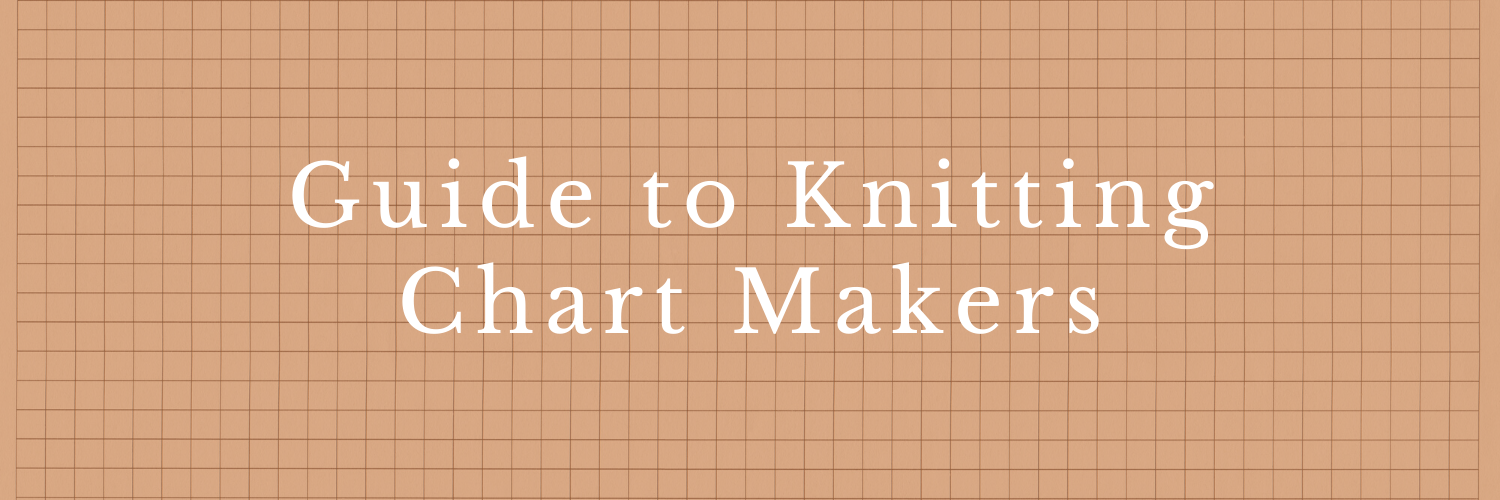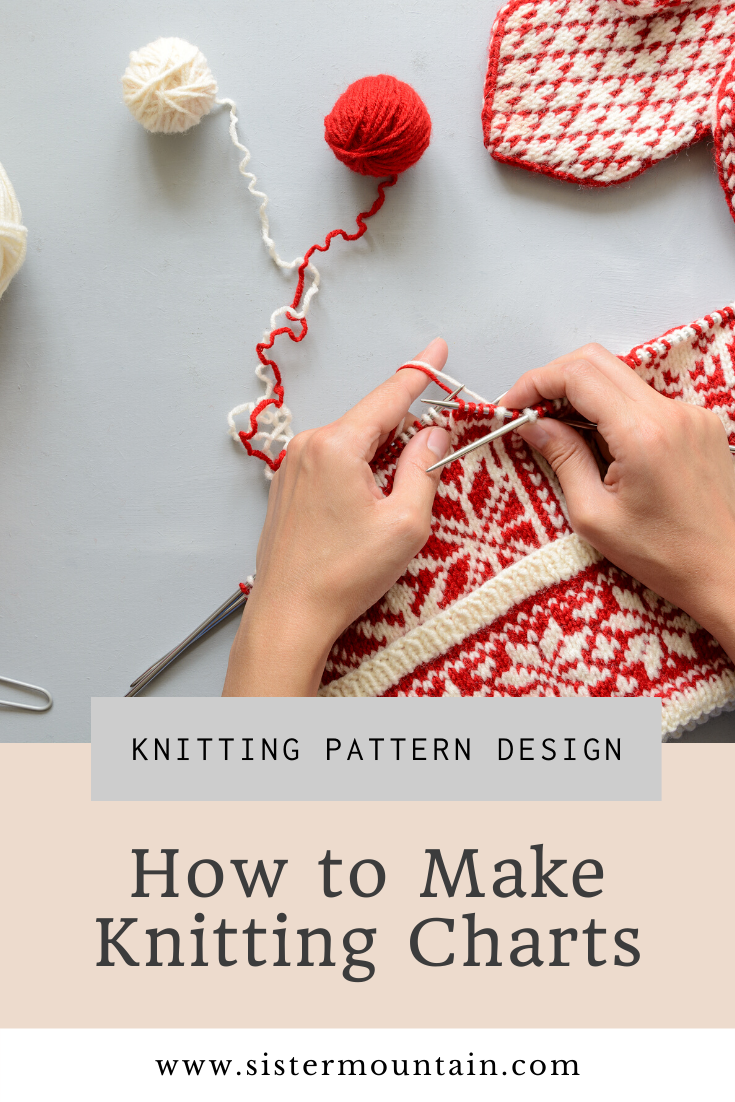How to Make Knitting Charts
Knitters often fall into one of two camps: those who love charts and those who dread them.
Whether you’re a chart enthusiast or someone who finds them bewildering, there’s no denying that charts can make knitting more visual and straightforward for many.
I firmly believe in providing both charts and written instructions in knitting patterns to cater to different preferences. Clear, simple charts are essential, which means leaving behind the days of hand-drawn grids!
There are plenty of options out there for creating digital knitting charts, from free tools to premium software. In this post, I’ll walk you through a variety of tools that fit different budgets and needs.
To be transparent, I’ve always used Stitchmastery for my charts. I’m such a fan that I haven’t felt the need to try anything else! However, I understand that Stitchmastery is a paid tool, and not everyone wants or needs to invest in software right away. That’s why I’ve researched and gathered a range of options to share with you.
Also, this post isn’t sponsored, and the companies I mention aren’t aware that I’m writing about them. This is purely based on my own research and experiences. So, let’s dive in!
Stitch Fiddle
Stitch Fiddle is a versatile tool for creating charts for knitting, crochet, cross-stitch, and various other crafts, such as diamond painting, fused beads, pixel art, and more. You don’t need to install software - you just use the tool through your web browser.
Price
They offer two versions of the chart maker:
Free Version: You can create up to 15 charts with a maximum grid size of 300 x 300 and up to 50 unique colours or symbols per chart.
Premium Version: For £4.50 per month (£2.25 per month if you pay annually), you get unlimited charts, a larger grid size of 1000 x 1000, and up to 200 unique colours or symbols per chart. The premium version also includes advanced features like downloading charts as vector files, Word documents, Excel spreadsheets or without any Stitch Fiddle branding. You can also use tools for mirroring charts, error checking, and converting charts into written instructions for knitting or crochet.
There are many benefits to using the premium service, and at such a reasonable price, it makes sense to pay for it if you can afford it. The flexible, pay-as-you-go model makes it accessible to designers and hobbyists alike who need chart-making software without committing to a long-term subscription.
Key Features
Cloud Storage: All your work is safely stored in the cloud, meaning you never lose your work.
Cross-Device Access: Stitch Fiddle can be used across multiple devices, including Windows, Mac, Android, iOS, Linux, Chromebook, and any modern web browser, with no installation required.
Collaborations: You can share your work with other users, which is particularly helpful when working with a tech editor.
Automatic Synchronisation and Updates: Your charts are automatically synced between devices, and you always receive the latest software updates.
Additional Premium Features
Progress Tracker: This tool allows you to keep track of your project's progress, which is handy if you’re making charts to knit from.
Customisation and Export Options: Premium users can download legends as separate files, customise chart grid lines, and choose custom colours for picture uploads.
Chart Minder
Chart Minder is another browser-based chart maker that does not require software download. It offers a range of tools for creating knitting charts, with a free version that includes many essential features and a pro version that adds advanced options.
Price
Free Version: The free version provides a basic chart design tool, the ability to share charts, and features like progress tracking and a gauge calculator. It also includes a stitch view preview, which allows you to see how your chart will look when knitted, and the option to generate a chart from an image. You can download your charts as images and choose from various knitting symbols.
Pro Version: For £1.25 per month (when paid annually) or £2 per month (when paid quarterly), the Pro version offers additional features like private charts, the ability to copy, paste, flip, and rotate chart sections, and a find-and-replace function for quickly updating symbols or colours. You also get higher-quality downloads, a wider range of colours, and options like custom grid fonts and symbol styling. The Pro version allows you to download charts without the Chart Minder watermark, which is important for use in knitting patterns.
Key Features
Gauge Calculator: This tool helps you understand how your stitch gauge will affect the final look of your project.
Stitch View Preview: This feature lets you visualize how your chart will appear when knitted, which can be particularly useful for those who prefer to see their work in a more realistic format.
Image-Based Chart Generation: Chart Minder allows you to create charts from existing images, which can be a time-saver when designing intarsia.
Additional Pro Features
Chart Repetition Preview: This feature lets you preview how your chart will look when repeated across your project, helping you ensure that your motifs align correctly and create the intended pattern effect.
Private Charts: This feature allows you to restrict access to your charts, which can be useful if you’re working on a design that isn’t ready for public release.
Custom Chart Options: The Pro version offers additional customization options, including custom grid fonts, symbol styling, and custom chart numbering.
A Spreadsheet Program, Such as Excel or Google Docs
This is a (likely, free) solution using a program that might already be familiar to you.
I’ll warn you - this process might feel rather clunky because you’re using the program in a way that it was not intended. However, you can get great results! I know one very successful designer who still uses Excel to create her own knitting charts.
If you’re interested in learning more about how to make charts in Excel, there is a great tutorial that walks you through making a colourwork chart here.
You can get knitting fonts to add to your Excel charts, too, so that you can chart textures. Here is a free knitting font that has an extensive range of symbols. Cathy, the creator, has given full permission for it to be used on commercial patterns, too.
Critique
You all know I love my spreadsheets, but I do see this process as unnecessarily laborious. Unless it clicks with you quickly, I would recommend seeking alternative solutions.
Stitchmastery
Stitchmastery is a comprehensive chart-making program that can be installed on Windows, macOS, and Linux. It’s my go-to tool for creating knitting charts because of its extensive features.
Key Features
Wide Range of Stitches: Stitchmastery includes every stitch you could imagine—from cables to brioche to Estonian stitches. There’s even the option to create your own custom stitches, though I haven’t needed to do that because the program already offers everything I need.
Automatic Written Instructions: As you create your chart, Stitchmastery automatically generates the written instructions. This is incredibly handy for offering both written and charted stitch instructions without extra effort. You can also customise the template so that the written instructions match your style guide’s language.
Learning Curve
Tutorials: While there was a bit of a learning curve initially, I found the tutorials provided on their website extremely helpful. My favourites are written by knitting pattern expert Kate Atherley. Starting with the basics and working through the features step-by-step made it much easier to get up to speed.
Recommendation: I highly recommend taking the time to go through these tutorials if you’re new to the software. It will help you unlock Stitchmastery’s full potential much faster than trying to figure it out on your own.
Favorite Feature
Mirroring Symbols: One of my favorite features is the ability to chart out a part of a pattern repeat, select the cells, copy and paste them, and then flip them. Stitchmastery automatically uses the opposite symbols when mirroring the shaping, which saves a lot of time.
Example: I used this feature extensively when creating the charts for my Tarragon sweater. I had several charts to make, including multiple versions graded for different sizes, and this feature was invaluable in managing my workload efficiently.
Value for Money
Pricing: It costs £70 to purchase Stitchmastery, which isn’t cheap. However, it’s a one-time payment, and there are no recurring fees. Given how much I use it, the initial cost has more than paid for itself.
Long-Term Use: If you intend to use it long-term, I find Stitchmastery to be the most straightforward and feature-rich chart-making tool I’ve tried.
Installation: You can install the software on two computers, which is handy. I had to wipe my computer due to tech issues, and I was able to reinstall it without having to pay again.
Which knitting chart maker should you use?
What you should use very much depends on personal preferences and where you are at with knitting pattern design.
If you are just starting out and have a small budget, try out one of the browser-based chart makers or play around with a spreadsheet chart.
However, if you can afford it, I highly recommend investing in Stitchmastery. It has everything you could possibly need going forward as well as excellent customer service. And if you’re new to it, take my advice and start with their tutorials - doing so will help you get the most out of the software much faster.
Discussion
How do you create your knitting charts? Share in the comments section below, especially if it’s something that I haven’t included in this blog post. It might help someone in our community!













